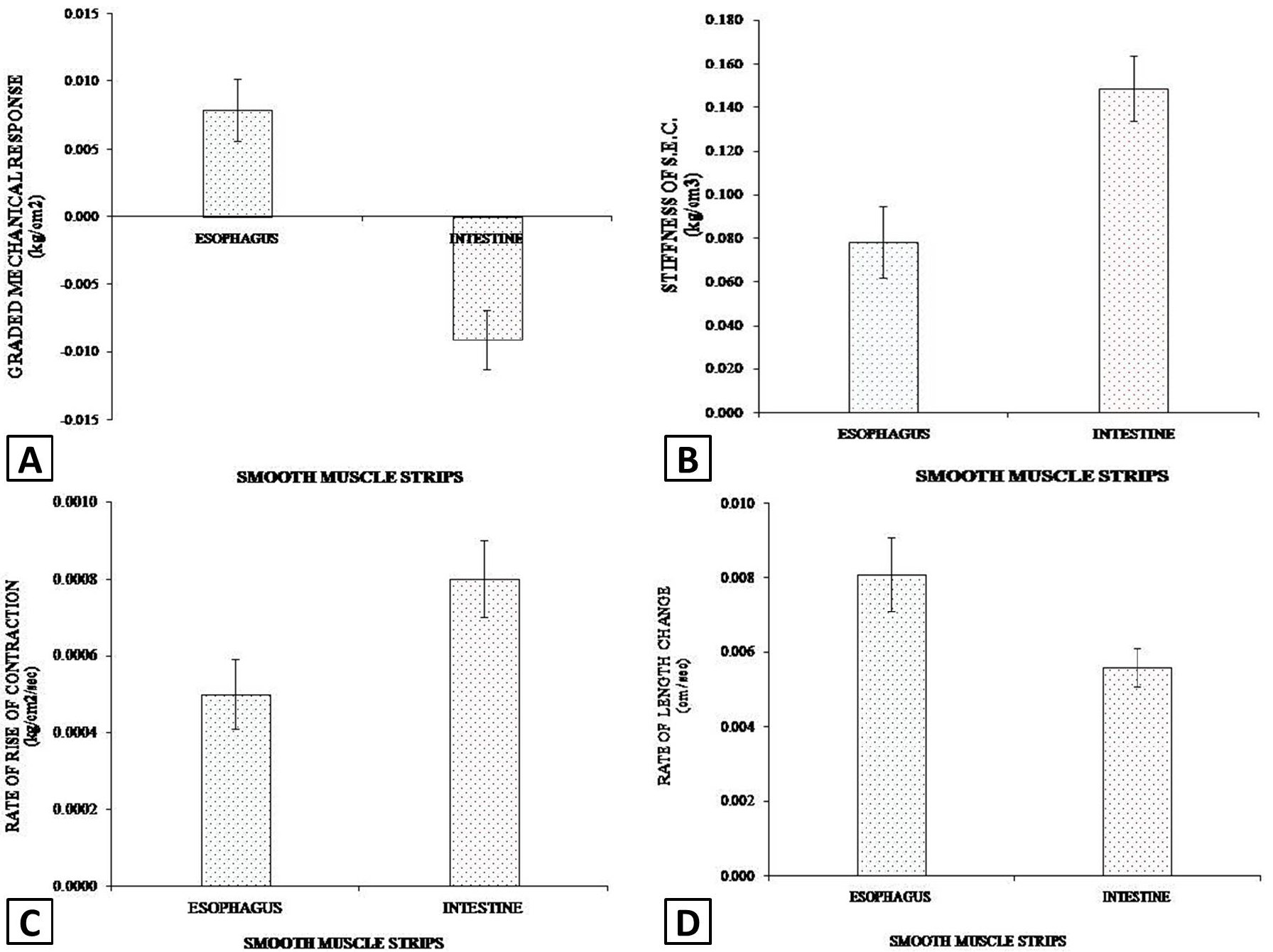Stimulus Specific Response on Mechanical Properties of Isolated Visceral Muscle Tissues of a Reptile, Uromastix hardwickii
Stimulus Specific Response on Mechanical Properties of Isolated Visceral Muscle Tissues of a Reptile, Uromastix hardwickii
Arifa Savanur1,*, Tallat Naz1,2, Tayyaba Hamid1,3, Syed Abid Ali4, Mian Jahangir1,3 and Muhammad Abdul Azeem4
Schematic illustration of the method used for the measurement of graded mechanical response, series elastic component stiffness and rate of force development. The muscle was stimulated electrically at 240 Hz and produces graded response (P1), release by 0.5 mm (P2). Δt is the time required by muscle strip to change tension from P1 to P2.
Effect of rapid release on Uromastix hardwickii smooth muscles stimulated by 240 Hz frequency. A, positive mechanical graded response of esophageal muscle strip. B, negative mechanical graded response of intestinal muscle strip. Transient events occurring at beginning of stimulation, 0.5 mm release and the end of stimulation are indicated by arrows A, B and C.
A comparison of esophageal and intestinal smooth muscle mechanics of Uromastix hardwickii: A, graded mechanical response; B, series elastic component stiffness; C, rate of force redevelopment; D, rate of length change.

















